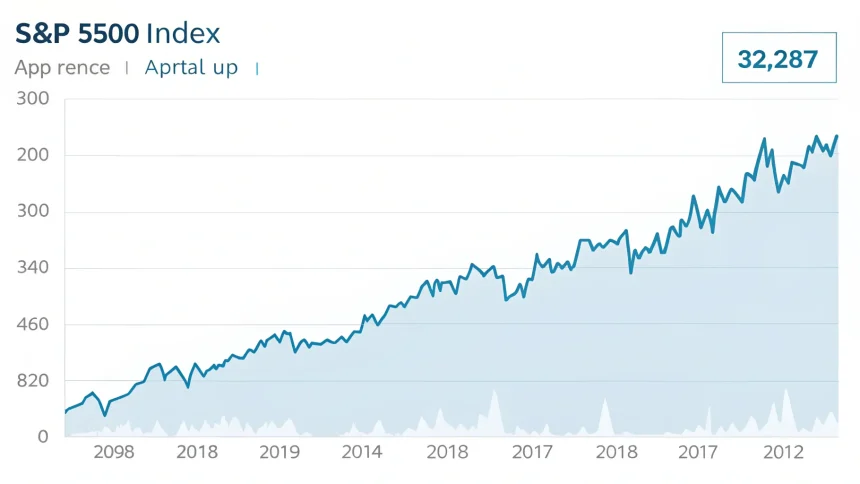The S&P 500 has climbed 37% from its April low, a rapid swing that is reshaping market sentiment and testing investor conviction. The move has lifted portfolios, narrowed borrowing costs for many companies, and revived debate over how long the rebound can last.
Traders describe a fast shift from fear to risk-taking. The rise has spanned technology leaders, industrial names, and parts of consumer spending. It also coincides with hopes for steadier inflation and an eventual easing of interest rates.
The S&P 500 has shot up a stunning 37% since hitting a low in April.
What’s Driving the Rally
Several forces sit behind the surge. Expectations for stable or lower interest rates have reduced pressure on valuations. Softer inflation readings have eased worries about a fresh tightening cycle. Corporate earnings have beaten restrained forecasts in several sectors.
Technology remains a key force. Spending on artificial intelligence, cloud tools, and automation has supported revenue at select firms. That narrative continues to attract capital to large, cash-rich companies with steady margins.
Improved credit conditions have helped, too. Tighter spreads and steady bank lending have supported buybacks and investment plans. That has fed confidence across broader equity benchmarks.
A Rally With Uneven Breadth
Even with strong index gains, participation has been uneven at times. Large-cap leaders have often set the pace, while smaller companies have lagged on cost pressures and financing needs. Defensive groups have advanced more slowly as investors favored growth-sensitive names.
Market breadth bears watching. Sustained recoveries tend to be stronger when more industries move higher together. A narrow advance can leave indexes sensitive to a swing in a few heavyweights.
Historical Context and Comparisons
Sharp rebounds are not rare after pullbacks. Past cycles show that when recession risks ease and profits stabilize, stocks can recover faster than expected. Still, a 37% climb in a short stretch ranks as a powerful move and can invite bouts of volatility.
Valuation matters at this stage. Price-to-earnings ratios can stretch during fast rallies. Future returns then hinge on earnings delivery and the path of interest rates.
Risks That Could Test Momentum
- Sticky inflation that delays or reduces central bank easing
- Slower earnings growth, especially among top index weights
- Rising bond yields that pressure stock valuations
- Geopolitical shocks that hit energy or supply chains
Any of these could cool enthusiasm. A pullback after such gains would not be unusual. The question is whether buyers step in on weakness or wait for clearer policy signals.
Investor Behavior and Flows
Sentiment has improved with the rally. Fund flows into equity products have picked up as benchmarks set fresh highs. Some investors, scarred by earlier swings, remain cautious and prefer cash or short-duration bonds. That dry powder can support demand on dips.
Institutional investors report selective positioning. Many favor quality balance sheets, free cash flow, and pricing power. That tilt reflects a desire to own companies that can defend margins if growth slows.
What to Watch Next
The next phase hinges on policy, profits, and pricing. Inflation prints will guide rate expectations. Earnings season will test whether guidance matches the optimism in prices. Moves in the 10-year Treasury yield will influence valuations across sectors.
Sectors tied to capital spending and productivity may remain in focus. So will financials, which are sensitive to funding costs and credit quality. Consumer health, measured by spending and delinquency data, will offer clues on the durability of growth.
The 37% climb since April has reset the market’s tone and raised the bar for results. Gains from here may require broader leadership and steady profit growth. Investors will watch inflation, rates, and earnings for confirmation that the rally has room to run, or signs that it needs a pause.







